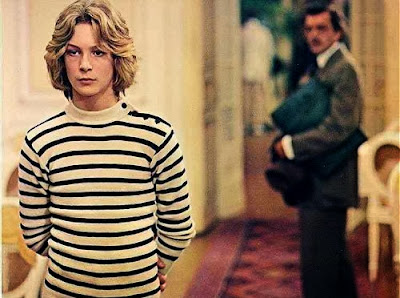Best damn record he never made

Last year I wrote about the record which Glenn Gould (above) described as the 'best damn record we've ever made' - his LP of Tudor consorte music. Today I am writing about the best damn record he never made.
Zenph Studios' "re-performance" of Glenn Gould's 1955 Goldberg Variations was released a couple of months back. I didn't dream up the word "re-performance". Zenph Studios did, and here is their definition - 'A “live realization of the original interpretation.” Zenph Studios takes audio recordings and turns them back into live performances, precisely replicating what was originally recorded. Our software-based process extracts every musical nuance of a recorded performance, and stores the data in a high-resolution digital file. These re-performance files, represented in a computer as MIDI files, contain every detail of how every note in the composition was played, including pedal actions, volume, and articulations – all with millisecond timings.'
Glenn Gould in Re-performance has some big fans. They include Stereophile Magazine, who made it their recording of the month, the Glenn Gould Foundation, and Gould's recording producer Lorne Tulk. When the "re-performance" CD was released most of the coverage came from the audiophile press. The music media, including this blog, didn't get too excited. The view was that this was just an interesting technical exercise similar to the reprocessed stereo that was around when two channel LPs were launched. But we were wrong. Read this from the 'record labels and recording studios section of the Zenph website:
The Diversity of Copyright Laws
The USA has strong copyright laws; sound recordings essentially don't go into the public domain until well into the 21st century. But, in the European Union (EU), for example, recordings go into the public domain 50 years after their first release. Small recording companies in the EU already re-issue CDs of historical mono recordings in volume. That's been a small concern to the labels, but in 2006 the situation gets troubling. 1956 was the start of early stereo, which is how we still listen nowadays. Starting in 2006, the "good stuff" from 1956 forward starts going into the public domain. Year by year, labels will lose European rights to the most prized, profitable recordings in their archives. With global retailing, CDs made in the EU are readily available anywhere.
The way around this is to create new, highly-desirable music recordings, which establish a new copyright. A modern re-recording can be a premium product, protected with the latest Digital Rights Management (DRM). For a modern re-recording to be acceptable to discerning jazz, classical, and pop listeners, it must be faithful, note-perfect, and identical to the original performance. That’s our business."
And this from Zenph's Investors section:
"In our contracts we look like a cross between an artist and a record producer, receiving a combination of fixed fees and a portion of the royalty stream of the release."
Are Zenph Studios "an entertainment technology company that specializes in software and processes for understanding - and re-creating - precisely how musicians perform"?
Or are they a vehicle for "establish(ing) a new copyright ... protected with the latest Digital Rights Management (DRM) ... receiving a combination of fixed fees and a portion of the royalty stream of the release"?
The jury is out. But the copyright date on my CD of Gould's 1955 Goldbergs is 1956, which means it is among "the "good stuff" from 1956" which has entered the public domain in the EU. Today, here in the EU, the "re-performed" Goldberg's on the Sony Classical label retail for £14.99 ($30.52), and the original mono 1955 recording is available on Naxos for £5.99 ($12.20).
With thanks to IP detective extraordinaire Carol Murchie. Any copyrighted material on these pages is included as "fair use", for the purpose of study, review or critical analysis only, and will be removed at the request of copyright owner(s). Report broken links, missing images and other errors to - overgrownpath at hotmail dot co dot uk








Comments
makes me think of those Lego remakes of "Star Wars"...